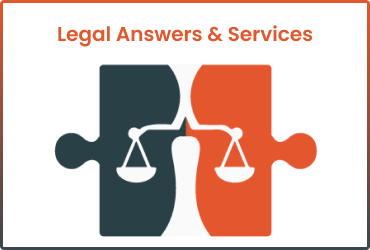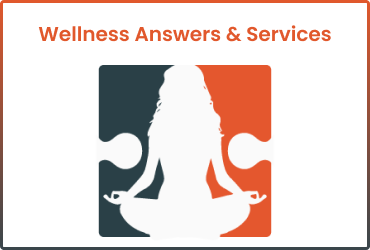What Is Copyright Law And How Do I Prove Infringement?
United States has two bodies of law covering copyright protection
The Copyright Act of 1976
The first law, the Copyright Act 1976, protects the rights of original authorship of works and grants copyright protection to authors and creators of such works. The law intended to protect all original works of authorship as society moves through new forms of digital media and future technologies.
The second body of law described below became the logical extension as digital media technology rapidly expanded around the globe.
Digital Millennium Copyright Act of 1998 (DMCA)
In 1998, The Digital Millennium Copyright Act became the second body of law to be enacted to manage the personal, commercial, rgulatory, and international aspects presented by the new digital media and its explosive pace of changing technology.
Consider this example:
Suppose you are a website content owner and suspect someone is stealing your content. In that case, the legal remedies available to you come from the DMC.
The DMC contains the same basic principles of the previous Copyright Act of 1976. The Copyright Act of 1976 still remains the primary legal authority on the basic legal principles of U.S. copyright law. Both bodies of law work are intended to work in together.
A primary aim of the DMCA is to protect the digital rights of both copyright owners and consumers. The recent changes in the original relate to digital infringement, protection, and the available remedies under the DMCA.
No need for a copyright mark to enforce authorship rights
Your publication of such works protects your authorship of original works. Your legal rights to enforce these property rights do not require labeling your work as such. Posting a copyright symbol is always recommended, but it is neither legally conclusive nor needed to protect your work against theft by third parties.
There are several different approaches to enforcing your ownership rights to your work. The first step is to provide notice of infringement to the offending party directly or to the offending party’s web host or internet service provider.
Unlawful scraping of another website’s content
If there was an unlawful scraping of your website content, the first approach is to serve written notice to the infringing party.
This is sometimes referred to as a “take-down” notification. The recipient of the notice is usually the web host or their internet service provider (ISP).
Liability For Publication of Protected Content Under The DMCA
On October 28, 1998, new and revised laws governing copyright liability for digital online services and content were enacted.
The revised laws protect online providers and hosts through what is referred the to as “safe harbors.”
Safe-Harbors
The safe harbor provisions of the DMCA protect them from online copyright infringement liability due to their relationship with their subscriber-web user.
Under this protection, if you cannot locate the infringing party directly, you will need to send written notice of infringement to the internet service provider/host, informing them of your infringement claims. They will, in turn, convey your information to the alleged copyright infringer.
After written notice is made to the infringing party, either directly by you or through the web host or internet provider, your next step is to either resolve the matter informally with the infringing party or file a copyright lawsuit against the infringing party.
If informal attempts to settle fail, you may file a lawsuit for standard copyright infringement damages and reasonable legal fees, costs of suit, and all statutory damages provided by law.
Defense of Copyright Infringement Claims Under The DMCA
It is not unusual for the infringing party to deny that they engaged in internet copyright infringement. From an evidentiary perspective, the owner of the protected content must be able to identify the exact time and location the infringing party downloaded the content.
The goal is to connect the copyright offender with the downloaded content
Today’s advanced technology enables the content owner to make this vital evidentiary connection. However, the ISP or Host usually possesses this essential information. If so, your lawyer may have to file a civil infringement action to subpoena the evidentiary records necessary to prove your claims.
What Constitutes Copywrite Infringement?
Ideas are not protected
Ideas are generally not protected by copyright law – but the words that describe those ideas can be. For example, suppose your article was scraped verbatim and placed on another person’s site. In that case, this is a blatant infringement, and you will have a legal right to recover against the infringing party.
Summarizing another’s original content
If the article was merely summarized by the alleged infringing party and put into their own words, this is usually considered legal under current copyright law.
Copying small excertps of another’s original content
Additionally, it is generally acceptable to copy small excerpts of the copyrighted material under the “fair use” rule so long as a link to the original content is provided.
The Fair-Use Doctrine Under 1976 Act
The Copyright Act of 1976 provides “fair use factors” to determine whether a particular use of protected copyrighted work falls under the fair-use defense rather than the misappropriation of protected content under internet copyright law.
In determining whether the fair-use defense applies to a given copyright dispute, the court may look at the following factors to determine if there was a copyright violation.
Fair-Use Factors Include:
- The purpose and character of the use, including whether the service was commercially motivated,
- The nature of the copyrighted work and whether there has been substantial use of the copyrighted work.
The court weighs these factors in determining whether to impose legal liability against the defendant.
Traditional Copyright Infringement Act Of 1976
Title 17 of the U.S. Code contains the controlling legislation that makes up the 1976 Copyright Act and provides copyright owners with the commercial and exclusive right to reproduce and sell their protected work, prepare derivative works, and contractually authorize others to do the same.
There is a common misconception concerning what qualifies as protected works of authorship under federal copyright law. Many people mistakenly believe that to have enforceable copyright, a public official or entity must certify the work as original before it can receive copyright protection. Nothing could be further from the truth.
Original work is self-protecting over time
Today, a work becomes self-protected by federal copyright law when created and made tangible through some form of communicated medium. However, the real issue is evidentiary proof should there be a subsequent legal challenge to the ownership of the copyright by another claiming legal rights to the same work.
Another common misconception of copyright law is that it protects inventions, ideas, brands, and designs. While these can be legally protected forms of original expression, they are usually best protected by obtaining a patent and trademark, not by copyright.
The Traditional and Most Common Way to Protect Original Works
Under the 1976 Copyright Act, the most common and accepted way to legally protect one’s original work, such as novels, movies, screenplays, poetry, advertising, music, and architectural drawings, was to register them through the federal copyright registration process.
Copyright registration process
The same body of federal copyright laws protects both forms of original work. However, copyright law will not protect facts or ideas, although it may protect how they are communicated.
Legal Benefits To Registering Your Copyright
There are several other critical legal benefits to federal copyright registration:
- Ir gives you the legal right to reproduce, repackage, or modify it from its original form.For example, an author can change the original published work, such as a novel, and call it a second, third, or fourth edition to their original piece of work.
- By doing reproducing and modifying the original form the copyright owner has also increased the overall value of their work.
- There is no better way of establishing proof of copyright ownership than by registering your work. Another reason to register your work is that it provides legal notice to the rest of the world that you assert ownership rights to the subject work.
Mediating Infringement Cases
From a litigation perspective, filing a legal action for copyright infringement is rarely an effective or cost-effective solution. Instead, intellectual property lawyers are finding increased success in submitting their cases to mediation services, which allows the competing parties to work out their differences and come up with a meaningful settlement of their copyright claims.
Protect Your Written Works And Inventions From Intellectual Property Theft.
Consumer Rights Lawyers
Should you have basic questions about copyright law, you can begin by consulting a Consumer Rights Lawyer that practices intellectual property law. If your matter is complex, the consumer lawyer will likely recommend you to an intellectual property lawyer. Intellectual property lawyers usually charge much higher fees.







